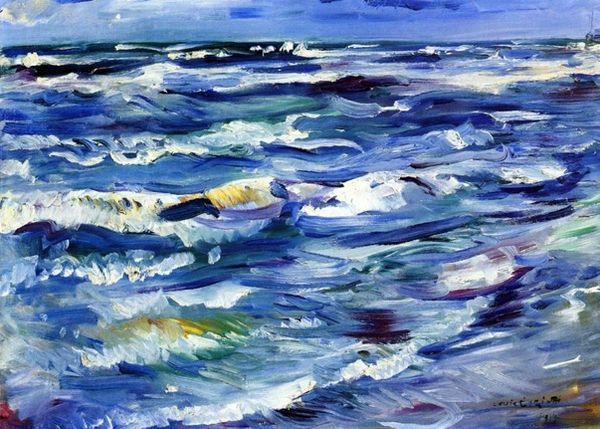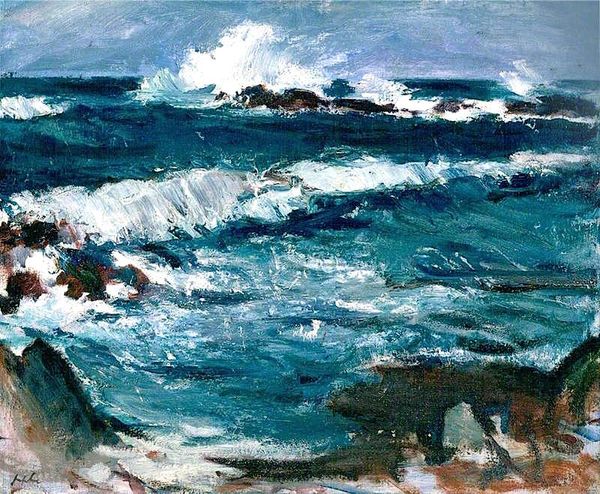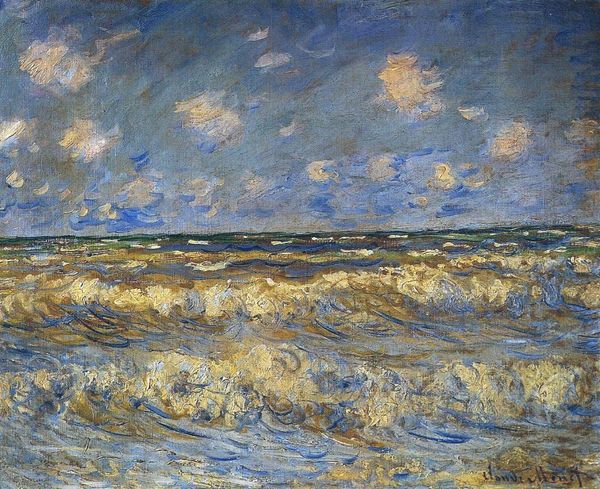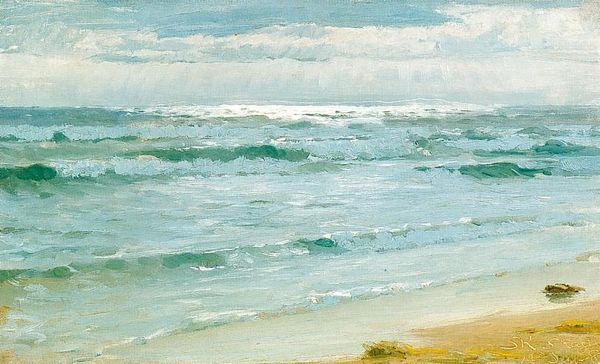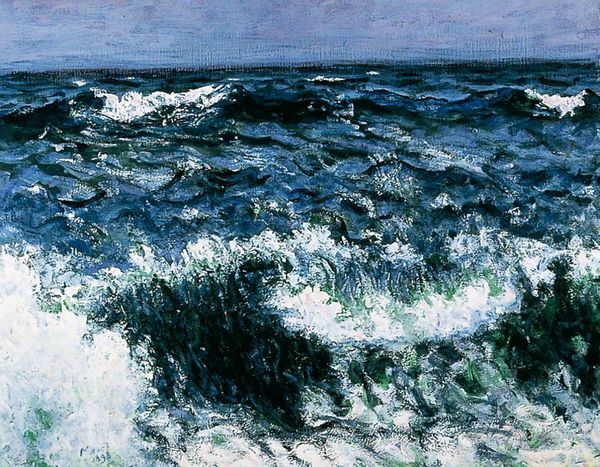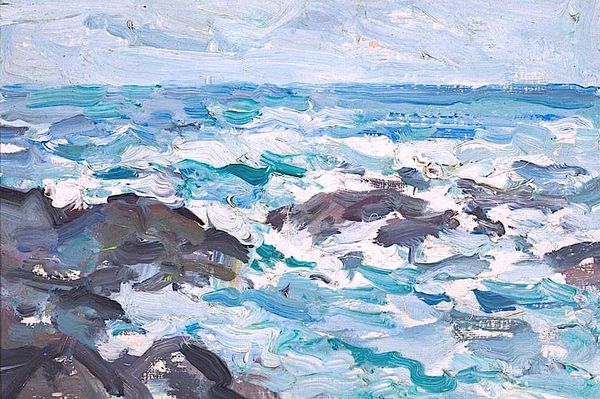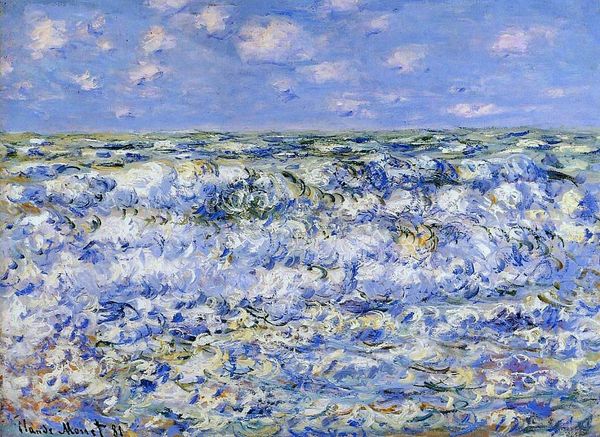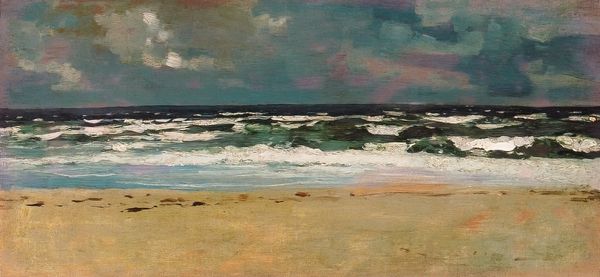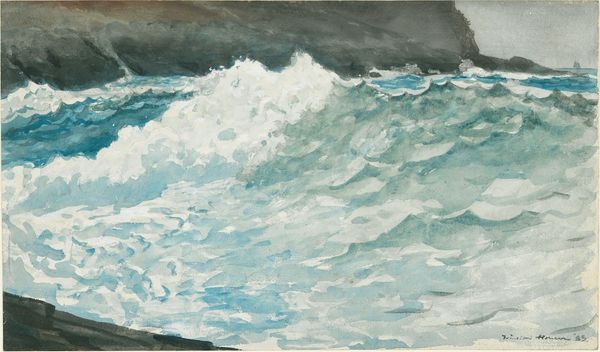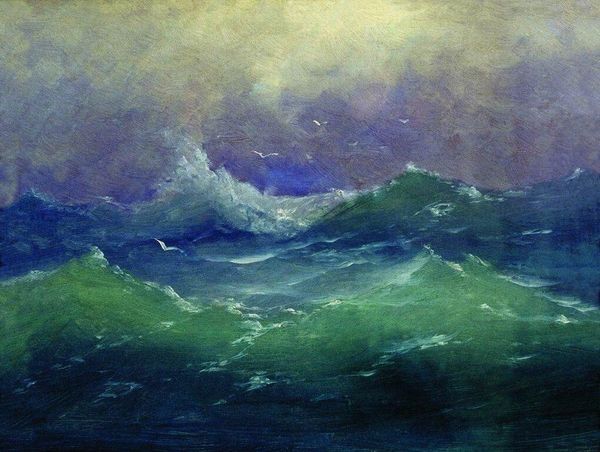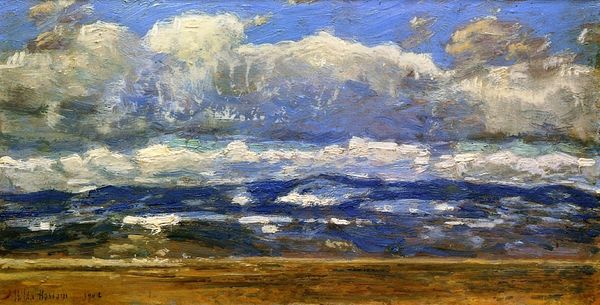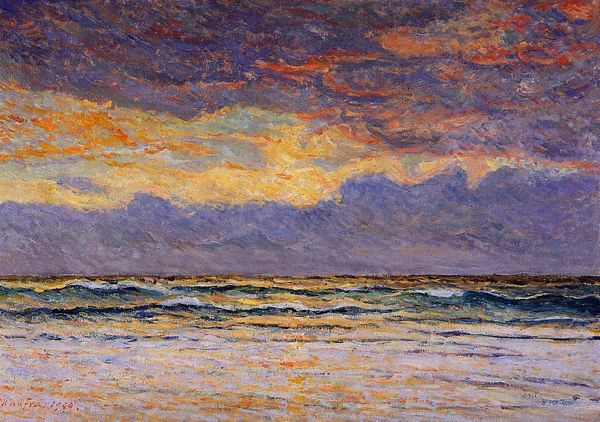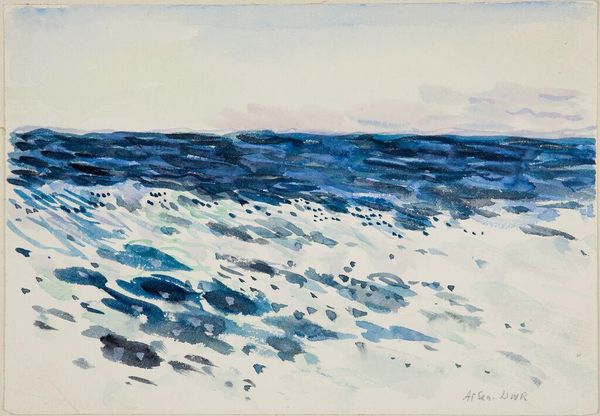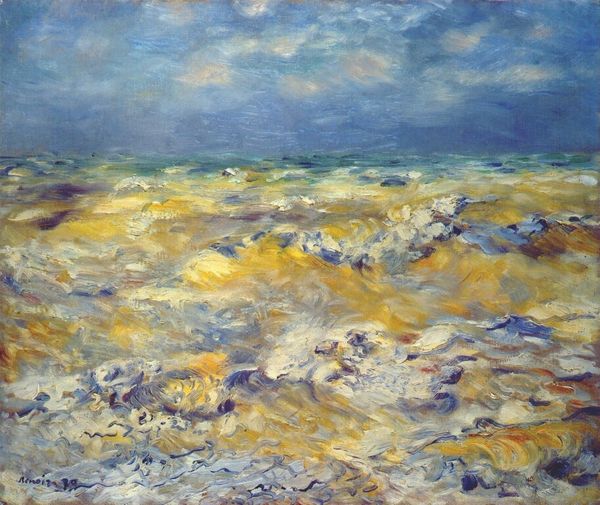
Copyright: Public domain
Samuel Peploe captured these "Waves" with oil on canvas, fixating upon their crests and troughs, each a dance of light and shadow. Consider the wave itself—a motif echoing throughout art history, from ancient Greek pottery to Hokusai's iconic woodblock print, "The Great Wave." It is a symbol of nature's untamed power, and also of the transience of life. The Romantic painters, like Turner, used it to convey a sense of the sublime, where beauty and terror intertwine. But here, Peploe presents us with something different. The brushstrokes, thick and deliberate, render the waves almost tangible. This tactile quality evokes a primal, visceral response within us. We are reminded of the sea's relentless rhythm, its ability to both nurture and destroy, tapping into our collective memory of humanity's relationship with the ocean. Peploe's waves, with their swirling forms, remind us that symbols are not static. They evolve, adapting to new contexts and resonating with each generation's subconscious fears and desires.
Comments
No comments
Be the first to comment and join the conversation on the ultimate creative platform.
